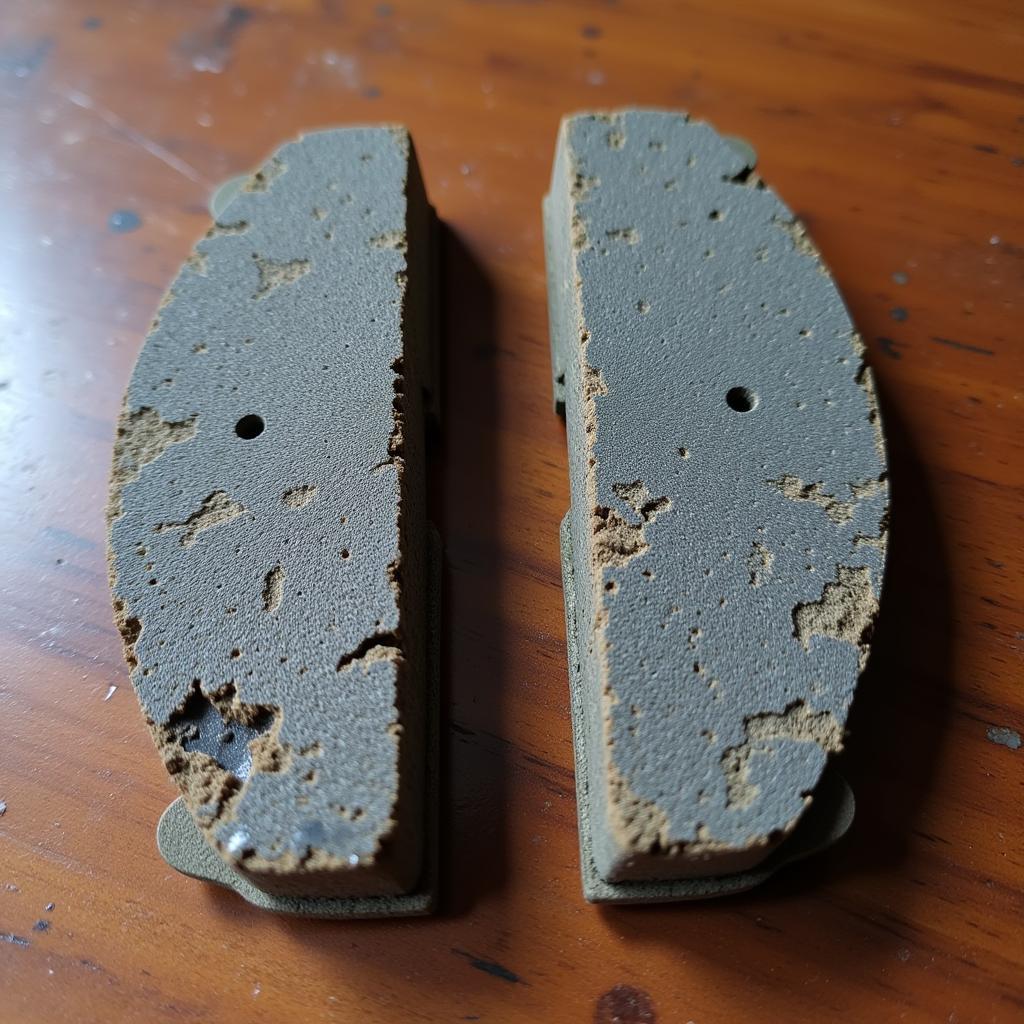The brake warning light on your Toyota Prado is a crucial safety feature, designed to illuminate if a problem is detected within the braking system. Ignoring this warning light could lead to significantly reduced braking performance, increasing the risk of an accident. This comprehensive guide explores the common causes of a Toyota Prado brake warning light and provides practical solutions to address them.
Understanding Your Toyota Prado’s Brake Warning Light
The brake warning light typically appears as a red circle with an exclamation mark (!) or the word “BRAKE” within it. When illuminated, it signifies one or more potential issues with your braking system.
Common Causes of a Toyota Prado Brake Warning Light
Here are some of the most common reasons your Toyota Prado’s brake warning light may be on:
1. Low Brake Fluid Level
One of the most frequent causes is low brake fluid. Brake fluid is a hydraulic fluid that transmits force from the brake pedal to the brake calipers, engaging the brake pads. A leak in the brake lines or worn brake pads can cause the brake fluid level to drop, triggering the warning light.
2. Worn Brake Pads
Brake pads are designed to wear down over time. When they become too thin, the brake warning light will illuminate as a reminder to replace them. Driving with severely worn brake pads can lead to damage to the rotors and calipers, resulting in costly repairs.
3. Faulty Brake Light Switch
The brake light switch activates your brake lights when you press the brake pedal. A malfunctioning brake light switch can also trigger the brake warning light.
4. ABS Issue
Your Toyota Prado is equipped with an Anti-lock Braking System (ABS) that prevents the wheels from locking up during hard braking. A problem within the ABS system, such as a faulty wheel speed sensor, can also illuminate the brake warning light.
5. Parking Brake Engaged
While seemingly obvious, accidentally leaving the parking brake partially engaged can also trigger the brake warning light. It’s essential to ensure the parking brake is fully disengaged before driving.
Diagnosing the Problem
Diagnosing the exact cause of the brake warning light often requires specialized knowledge and tools. However, you can perform some initial checks:
- Check the brake fluid level. If it’s low, there might be a leak in the braking system.
- Inspect the brake pads. If they appear thin or worn, they likely need replacement.
- Check the parking brake. Ensure it’s fully disengaged.
When to Seek Professional Help
If you’re uncomfortable performing these checks or the brake warning light remains illuminated despite addressing the above issues, it’s crucial to seek professional help immediately.
“Ignoring a brake warning light is like neglecting a flashing red signal; it’s crucial to address the underlying issue promptly to ensure your safety and the well-being of others on the road,” advises John Miller, Senior Automotive Engineer at RemoteAutoExperts.
Remote Diagnostics and Programming Solutions for Toyota Prado Brake Issues
In today’s digitally connected world, remote diagnostics and programming offer a convenient and efficient way to diagnose and resolve complex car problems, including brake system issues.
Remote diagnostics for your Toyota Prado involves connecting your vehicle to a remote computer via a specialized device. This allows certified technicians to:
- Read your vehicle’s fault codes, identifying the root cause of the problem.
- Analyze live data streams from various sensors within the braking system.
- Perform software updates and calibrations remotely.
Benefits of Remote Diagnostics and Programming:
- Convenience: Receive expert diagnostics and solutions from the comfort of your home or office.
- Efficiency: Save time and avoid unnecessary trips to the mechanic.
- Cost-effectiveness: Potential for lower diagnostic fees and quicker turnaround times.
David Wilson, Lead Software Engineer at AutoTech Solutions, emphasizes that, “Remote diagnostics and programming provide car owners with a proactive approach to car maintenance. Instead of reacting to problems, we can now anticipate and address them remotely, ensuring a smoother and safer driving experience.”
Conclusion
The brake warning light on your Toyota Prado should never be ignored. Understanding the common causes and potential solutions can help you address the issue proactively. However, if you’re unsure about any aspect of your vehicle’s braking system, seeking professional assistance is crucial. With advancements in remote diagnostics and programming, resolving complex car problems like brake system issues has become more convenient and efficient than ever.

